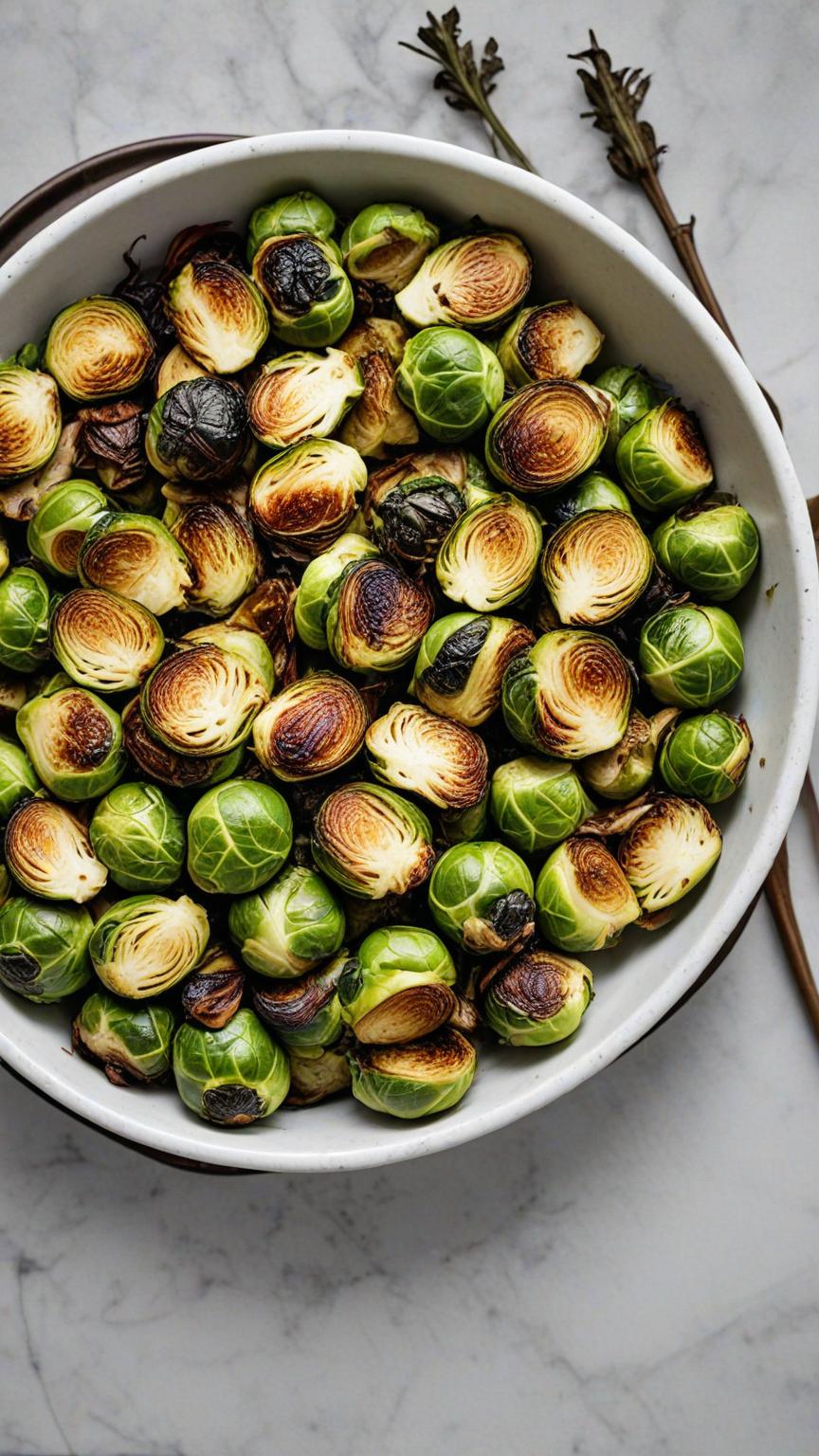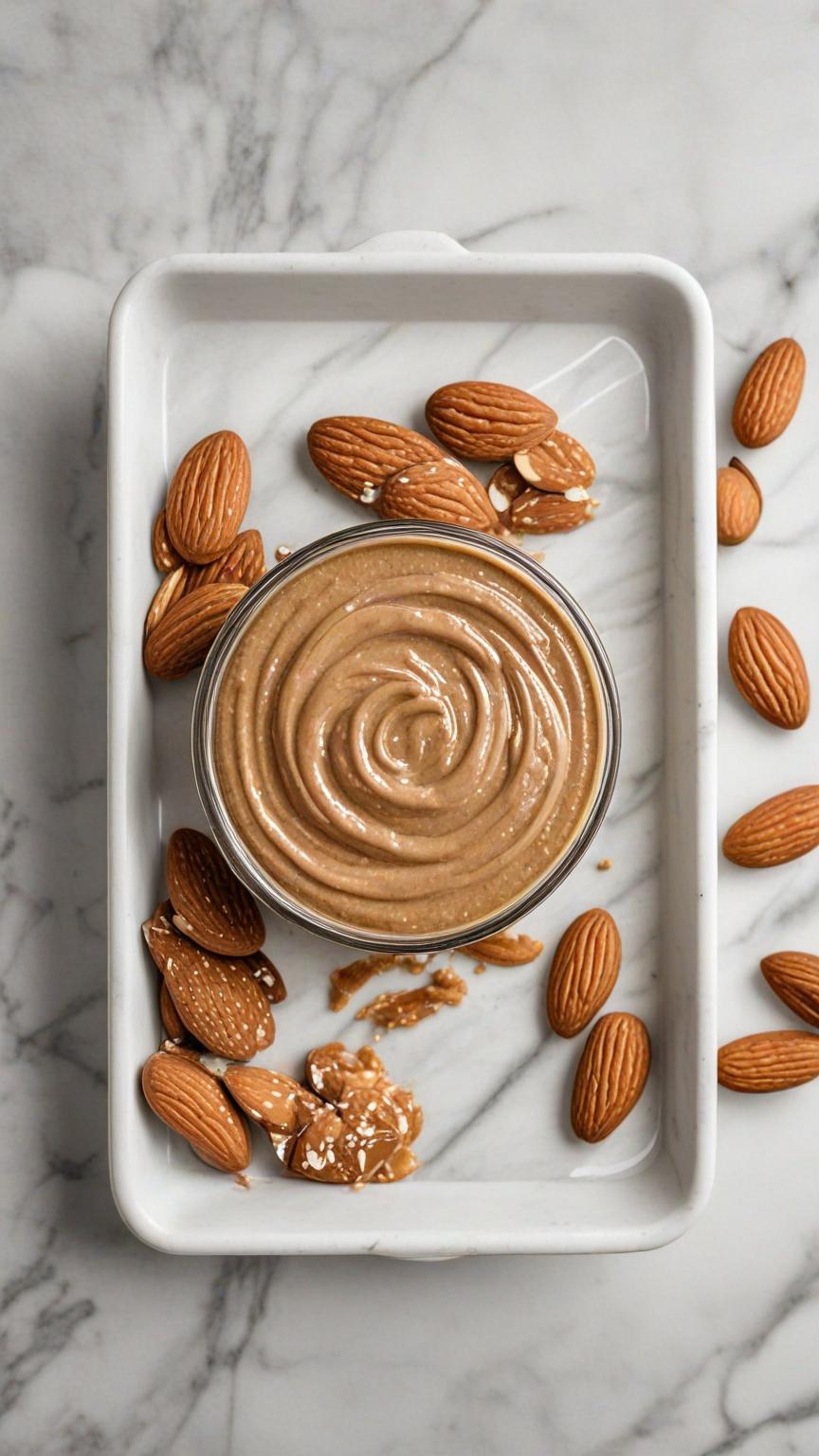5-minute grilled brussel sprouts Transform your vegetable side dish with these delicious and easy Grilled Brussels Sprouts! Perfectly charred and seasoned with olive oil, garlic, and a hint of smoked paprika, these sprouts deliver a savory, smoky flavor that pairs beautifully with any main course. A splash of balsamic vinegar or lemon juice adds a tangy finish, while a sprinkle of grated Parmesan and fresh parsley takes them to the next level. Nutritious and full of flavor, these grilled Brussels sprouts are sure to become a staple at your table, whether you’re hosting a barbecue or enjoying a weeknight dinner. Enjoy a delightful combination of crispiness and tenderness with every bite! Hey look–ingredients! Just a few ingredients to make your recipe of course! Shop Now Shop Now Shop Now Shop Now Pin Print 5-Minute Grilled Brussel Sprouts Recipe by Custom Curves Course: SidesDifficulty: Easy Servings 4 servingsPrep time 5 minutesCooking time 5 minutesCalories 120 kcal Ingredients 1 Ib (450 g) Brussels sprouts 2 Tbsp olive oil 2 clove garlic, minced 1 tsp salt 1/2 Tsp black pepper 1/2 tsp smoked paprika (optional for a smoky flavor) 1 Tbsp balsamic vinegar or lemon juice (optional for added flavor) Grated Parmesan cheese (optional for garnish) Fresh parsley, chopped (optional for garnish) Directions Prepare the Brussels Sprouts: Trim the ends of the Brussels sprouts and remove any yellow or damaged outer leaves Cut the Brussels sprouts in half lengthwise. Season the Brussels Sprouts In a large bowl, toss the Brussels sprouts with olive oil, minced garlic, salt, black pepper, and smoked paprika (if using). Ensure the Brussels sprouts are evenly coated with the seasoning. Preheat the Grill: Preheat your grill to medium-high heat (around 400°F or 200°C). Grill the Brussels Sprouts: Place the Brussels sprouts cut side down on the grill grates. Grill for about 5-7 minutes on each side, or until the Brussels sprouts are tender and have a nice char. If the sprouts are charring too quickly, reduce the heat slightly. Add Optional Flavor: During the last minute of grilling, drizzle the Brussels sprouts with balsamic vinegar or lemon juice for added flavor. Serve: Remove the Brussels sprouts from the grill and transfer them to a serving platter. Garnish with grated Parmesan cheese and chopped fresh parsley, if desired. Serve immediately while hot. Grilled Brussels sprouts offer a delightful twist on this nutritious vegetable, turning them into a smoky, crispy, and irresistibly savory side dish. The grilling process brings out their natural sweetness and adds a charred depth of flavor that perfectly complements their slightly nutty taste. With a simple seasoning of olive oil, garlic, and a touch of smoked paprika, these sprouts are transformed into a flavorful treat that’s both healthy and satisfying. Whether served alongside your favorite main course or enjoyed as a stand-alone snack, grilled Brussels sprouts are a versatile and delicious addition to any meal, showcasing the perfect balance of taste and nutrition. Share: Facebook Pinterest Email Shop Now Social Media Facebook-f Youtube Pinterest Instagram Tiktok Most Popular Get The Latest Updates Subscribe To Our Weekly Newsletter No spam, notifications only about new post, updates. Categories On Key Related Posts
Oil Free Almond Butter
Oil Free Almond Butter Almond butter is a delicious and nutritious spread that can be enjoyed on toast, in smoothies, or as a dip for fruits and vegetables. While traditional almond butter recipes often include added oils, it is possible to make a healthier version without any oil. In this recipe, we will guide you through the process of making oil-free almond butter at home. How do I enhance the taste of homemade oil-free almond butter? Homemade almond butter is a versatile and delicious ingredient that can be used in a variety of ways. Its creamy texture and nutty flavor make it a great addition to both sweet and savory dishes. Here are some ideas on how to use homemade almond butter: 1. Spread: One of the most common uses for almond butter is as a spread. You can use it as a healthier alternative to traditional spreads like peanut butter or Nutella. Spread it on toast, bagels, or crackers for a quick and nutritious snack. You can also add a drizzle of honey or sprinkle some cinnamon on top for extra flavor. 2. Smoothies: Almond butter can be a great addition to smoothies, adding creaminess and richness. Simply blend it with your favorite fruits, vegetables, and liquid base (such as almond milk or coconut water) for a nutritious and filling smoothie. It pairs well with ingredients like bananas, berries, spinach, and cocoa powder. 3. Baking: Almond butter can be used in various baked goods to add moisture and flavor. You can substitute it for other nut butters or even regular butter in recipes like cookies, brownies, muffins, and cakes. It works particularly well in recipes that call for nuts or have a nutty flavor profile. 4. Dips and Sauces: Homemade almond butter can be used as a base for dips and sauces. You can mix it with ingredients like yogurt, lemon juice, garlic, and herbs to create a creamy dip for vegetables or pita chips. It can also be thinned out with water or oil to make a flavorful sauce for noodles or stir-fries. 5. Salad Dressings: Almond butter can be incorporated into salad dressings to add richness and depth of flavor. Combine it with ingredients like olive oil, vinegar, mustard, honey, and herbs to create a creamy dressing that pairs well with salads containing fruits, vegetables, or grains. 6. Protein Bars and Energy Balls: Almond butter can be a key ingredient in homemade protein bars and energy balls. Its natural oils help bind the ingredients together, while its nutty flavor adds depth. Mix it with oats, dried fruits, nuts, seeds, and sweeteners like honey or maple syrup to create a nutritious and portable snack. 7. Stir-Fries: Almond butter can be used as a sauce or garnish for stir-fried dishes. Its creamy texture and nutty taste complement vegetables, tofu, chicken, or shrimp. You can mix it with soy sauce, ginger, garlic, and other seasonings to create a flavorful sauce that coats the ingredients. 8. Oatmeal: Add a spoonful of almond butter to your morning oatmeal for extra creaminess and flavor. It pairs well with toppings like sliced bananas, berries, nuts, seeds, or a drizzle of honey. 9. Ice Cream Topping: Drizzle homemade almond butter over your favorite ice cream flavors for a decadent treat. The combination of cold ice cream and warm almond butter creates a delightful contrast in textures and temperatures. 10. Homemade Granola: Incorporate almond butter into your homemade granola recipe for added richness and flavor. Mix it with oats, nuts, seeds, dried fruits, sweeteners like honey or maple syrup, and bake until golden brown for a crunchy and nutritious breakfast option. Products from the Recipe. You dont have to cook if you dont feel like it. Order Vegan Butter and have it shipped straight to your door step! Pin Print Oil Free Almond Butter Recipe by Custom Curves Course: SidesCuisine: VeganDifficulty: Easy Servings 8 servingsPrep time 20 minutesCooking time 10 minutesCalories 231 kcal Ingredients 2 cups raw almonds 1/4 teaspoon salt (optional) 1 tablespoon honey or maple syrup (optional) Directions Preheat your oven to 350°F (175°C). Spread the almonds evenly on a baking sheet and roast them for about 10 minutes until they become fragrant and slightly golden. This step helps to enhance the flavor of the almonds. Allow the roasted almonds to cool completely before proceeding to the next step. This will prevent them from turning into almond butter too quickly. Once cooled, transfer the almonds to a high-powered blender or food processor. You can also use a mortar and pestle if you prefer a chunkier texture. Blend or process the almonds on high speed for about 5 minutes, scraping down the sides occasionally. At first, the almonds will turn into a fine powder resembling almond flour. As you continue blending, the almonds will release their natural oils and start clumping together. Keep blending until you achieve a smooth and creamy consistency. This may take some time, so be patient. If desired, add salt and sweetener of your choice (honey or maple syrup) to enhance the flavor of your almond butter. Blend for an additional minute to incorporate these ingredients evenly. Once you have reached your desired consistency, transfer the oil-free almond butter to an airtight container and store it in the refrigerator for up to two weeks. Notes It’s important to use raw almonds for this recipe, as roasted almonds may already contain added oils. If you prefer a crunchy almond butter, you can reserve a small portion of the roasted almonds and chop them finely. Stir them into the creamy almond butter once it’s ready. Feel free to adjust the sweetness and saltiness according to your taste preferences. Oil-free almond butter is a type of almond butter that is made without the addition of any oils. Almond butter is typically made by grinding almonds into a smooth and creamy paste, similar to peanut butter. While some commercial brands of almond butter may contain added oils, such as vegetable oil or palm oil, oil-free almond butter is made solely from almonds. Oil-free almond


